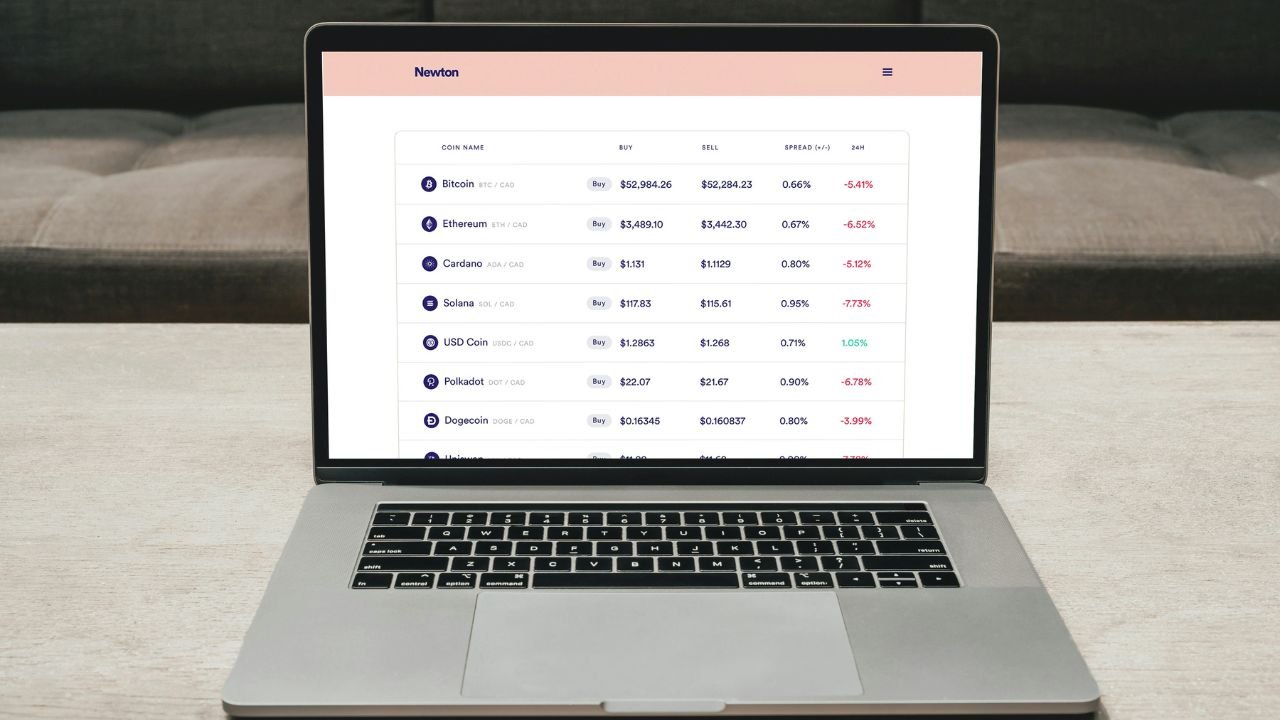Finance
A Comprehensive Guide to Bitcoin Trading Platforms
Bitcoin, the first decentralized cryptocurrency, was introduced in 2009 by an anonymous entity known as Satoshi Nakamoto. This innovative digital currency allows for peer-to-peer transactions without the need for intermediaries, like banks. Bitcoin operates on a technology called blockchain, which is a distributed ledger that ensures transparency and security in transactions. This decentralized approach has significantly disrupted traditional financial systems, sparking widespread interest and adoption across various sectors.
The value of Bitcoin is influenced by several key factors within the broader cryptocurrency market. Supply and demand principles play a crucial role, as Bitcoin has a finite supply of 21 million coins. As demand increases, particularly during market exuberance or institutional adoption, prices tend to rise. Conversely, when market sentiment shifts, or regulatory developments occur, the price can experience significant volatility, impacting investor confidence and trading activity.
Other influential elements include market sentiment, technological advancements, regulatory news, and macroeconomic factors. For instance, announcements from regulatory bodies regarding cryptocurrency can create waves of optimism or fear, causing shifts in market dynamics. Additionally, technological upgrades, such as the implementation of the Lightning Network to enhance transaction speed, can positively influence Bitcoin’s attractiveness among traders and users alike.
Understanding these market dynamics is essential for those engaging in Bitcoin trading. Recognizing how external factors affect price fluctuations can inform traders’ strategies and decision-making processes. As Bitcoin continues to emerge as a vital asset within the cryptocurrency realm, its market behavior offers critical insights into the world of digital currencies and the future of financial transactions.
Types of Bitcoin Trading Platforms
In the rapidly evolving landscape of cryptocurrency trading, Bitcoin trading platforms are essential for investors looking to buy, sell, and manage their digital assets. There are primarily four types of Bitcoin trading platforms: centralized exchanges, decentralized exchanges, peer-to-peer platforms, and brokerage services. Each type offers unique advantages and disadvantages that cater to different user preferences and trading needs.
Centralized exchanges (CEX) are among the most common platforms for trading Bitcoin. These platforms act as intermediaries between buyers and sellers, providing high liquidity and a wide range of trading pairs. Popular examples include Binance and Coinbase. However, they also require users to trust the platform with their funds, raising concerns about security vulnerabilities and potential hacks. Despite these risks, the user experience is often streamlined, appealing to beginners due to their user-friendly interfaces.
On the other hand, decentralized exchanges (DEX) operate without a central authority, allowing users to trade directly with one another. This system enhances privacy and reduces the risk of hacking, as users retain control of their funds. Nevertheless, DEX platforms may present challenges in terms of liquidity and speed of transactions. Examples include Uniswap and SushiSwap, which cater to users who prioritize security and self-custody of their assets.
Peer-to-peer (P2P) platforms create a marketplace for users to trade Bitcoin directly with one another, often enabling transactions in local currency. Services like LocalBitcoins and Paxful facilitate this process, providing a varied range of payment options. P2P trading can offer benefits such as competitive rates and anonymity; however, it also carries risks related to fraud and the need for users to thoroughly vet their trading partners.
Lastly, brokerage services provide a simplified buying experience, allowing users to purchase Bitcoin without engaging in complex trading strategies. Platforms like Robinhood and eToro cater specifically to users seeking straightforward transactions. While these platforms offer convenience, they may charge higher fees and limit users’ control over their assets, especially when it comes to withdrawing cryptocurrencies.
Understanding the types of Bitcoin trading platforms and their respective advantages and disadvantages will empower traders to select the best option tailored to their trading style and needs.
Key Features to Look for in a Trading Platform
When navigating the world of Bitcoin trading, selecting the right platform is crucial for success. Traders should consider several key features that can significantly influence their trading experience and outcomes. One of the most important aspects is the user interface design; an intuitive and user-friendly layout ensures that traders can execute trades quickly and efficiently without confusion.
Another critical factor is trading fees, which can vary significantly across platforms. Traders must thoroughly understand fee structures, including transaction, withdrawal, and deposit fees, as these costs can accumulate and impact overall profitability. Choosing a platform with competitive fees can enhance the trading experience and maximize returns.
Security protocols also play a vital role in the selection process. Due to the inherent risks associated with cryptocurrencies, it is essential that the platform employs robust security measures such as two-factor authentication, encryption, and cold storage for funds. A reputable platform will transparently outline their security practices, providing users with peace of mind regarding the safety of their investments.
Furthermore, efficient customer support is indispensable. Traders should seek platforms that offer responsive customer service through various channels, including live chat, email, and phone. In times of technical difficulties or trading inquiries, having reliable support can make a significant difference in a trader’s experience.
The availability of trading tools is another feature to consider. Platforms that offer advanced charting tools, market analysis, and trading signals can provide traders with essential insights that help make informed decisions. Additionally, liquidity is crucial for effective trading; a platform with high liquidity allows traders to enter and exit positions without significant price fluctuations.
In conclusion, by evaluating these essential features—user interface design, trading fees, security protocols, customer support, available trading tools, and liquidity—traders can make informed decisions when choosing a Bitcoin trading platform that aligns with their trading goals and preferences.
Getting Started with Trading: Tips and Best Practices
Entering the world of Bitcoin trading can be an exciting yet daunting experience for beginners. To navigate this space efficiently, it is crucial to equip oneself with fundamental knowledge and practical tips. The first step is to choose a reputable Bitcoin trading platform. Look for platforms that offer transparency, robust security features, and user-friendly interfaces. Once you have selected your platform, creating an account typically involves providing personal information and verifying your identity. This process can vary between exchanges and may require documentation, such as identification and proof of address.
Understanding trading pairs is essential for any Bitcoin trader. Trading pairs represent the value of one currency in relation to another. For instance, the BTC/USD pair indicates how much U.S. dollars are needed to purchase a Bitcoin. Familiarizing yourself with various trading pairs is integral, as it allows you to diversify your trading portfolio and manage exposure to different currencies effectively.
Developing solid strategies for buying and selling Bitcoin can significantly impact your trading success. Many traders utilize technical analysis, examining past price movements, volume, and market trends to forecast future price action. Others may opt for fundamental analysis, which involves studying economic indicators and broader market conditions. Regardless of the strategy employed, implementing risk management techniques is crucial. This may include setting stop-loss orders to limit potential losses and determining position sizes that align with your risk tolerance.
Lastly, continuous learning and staying updated are vital components of successful trading. The cryptocurrency market evolves rapidly, and keeping abreast of industry news, market trends, and regulatory developments can give you a competitive edge. Utilizing educational resources, participating in trading communities, and practicing through demo accounts can further enhance your trading acumen. By adhering to these best practices, novice traders can build a solid foundation for their Bitcoin trading journey.





